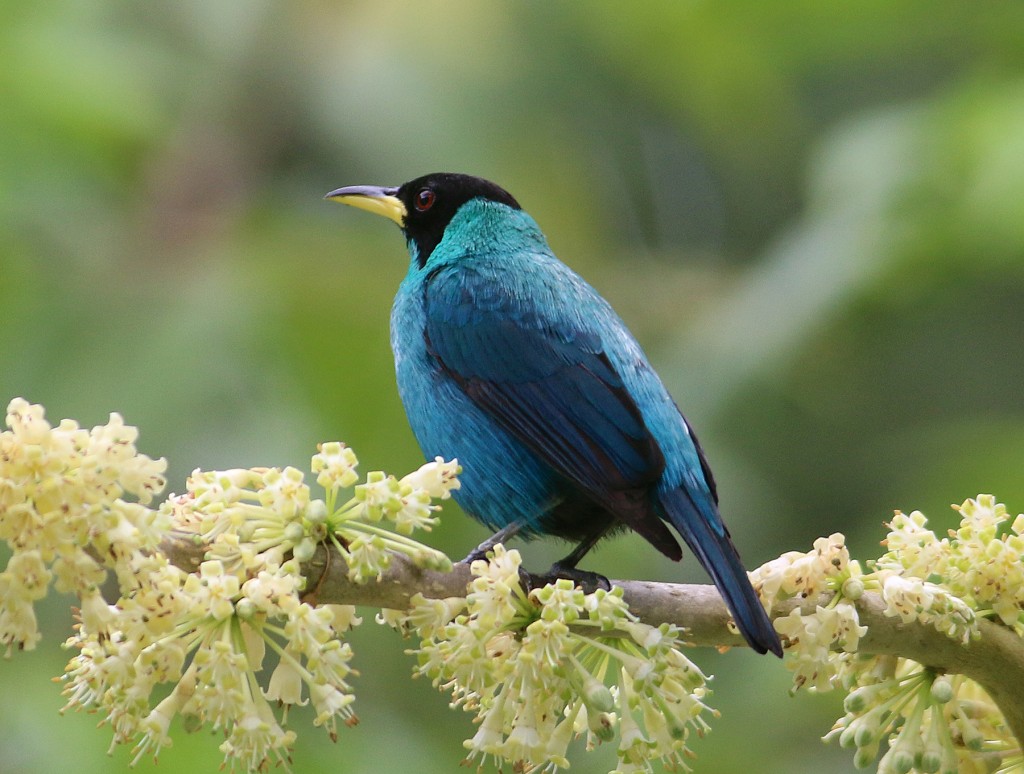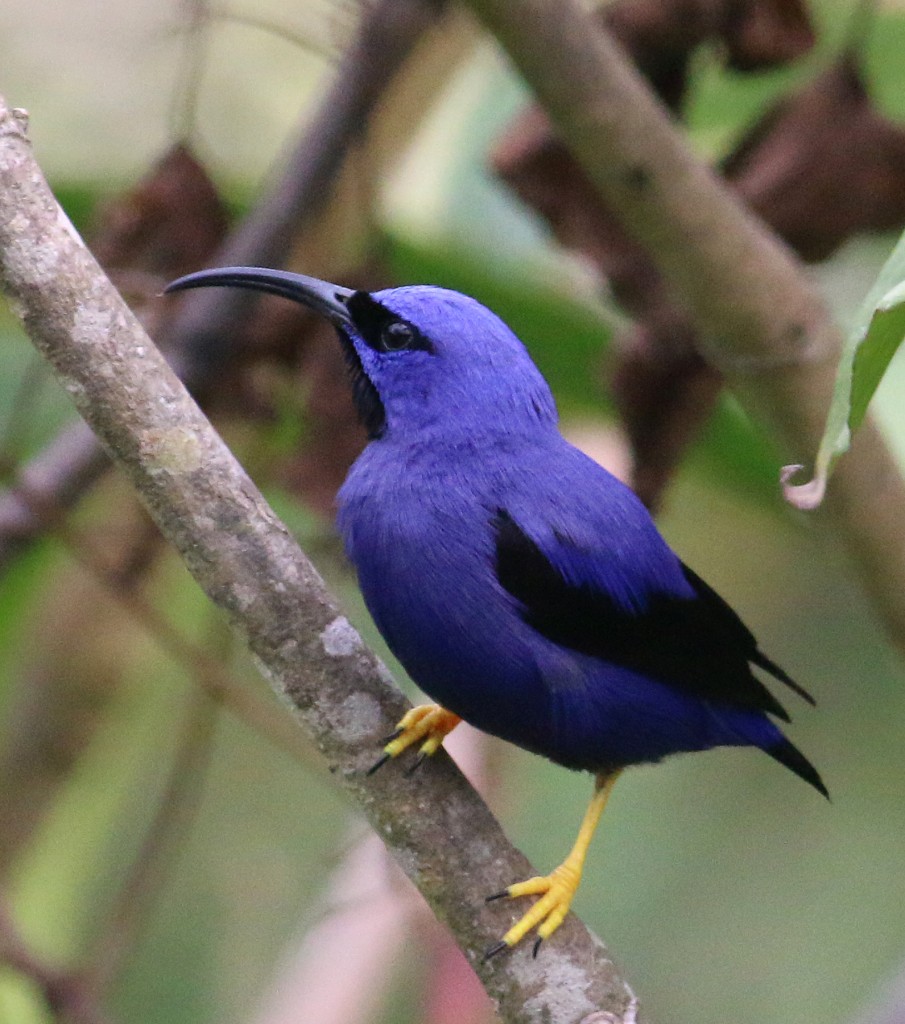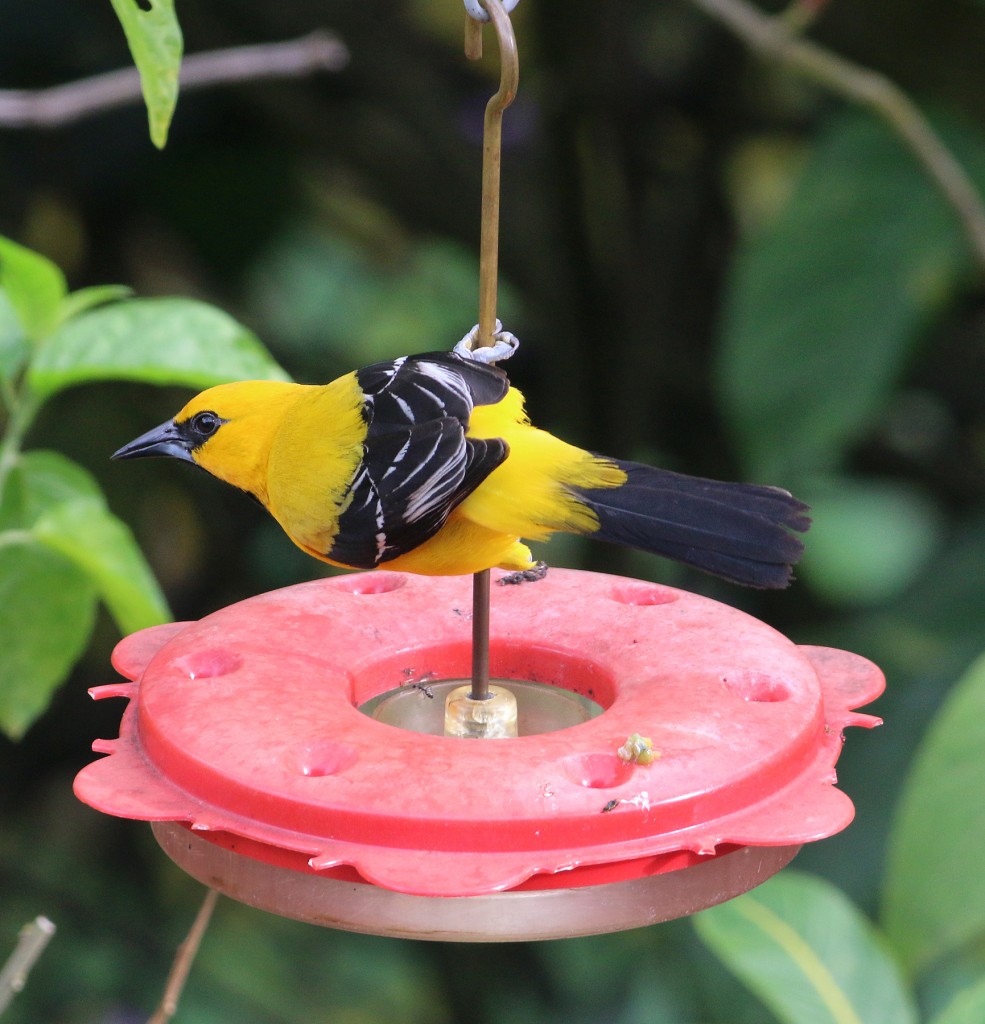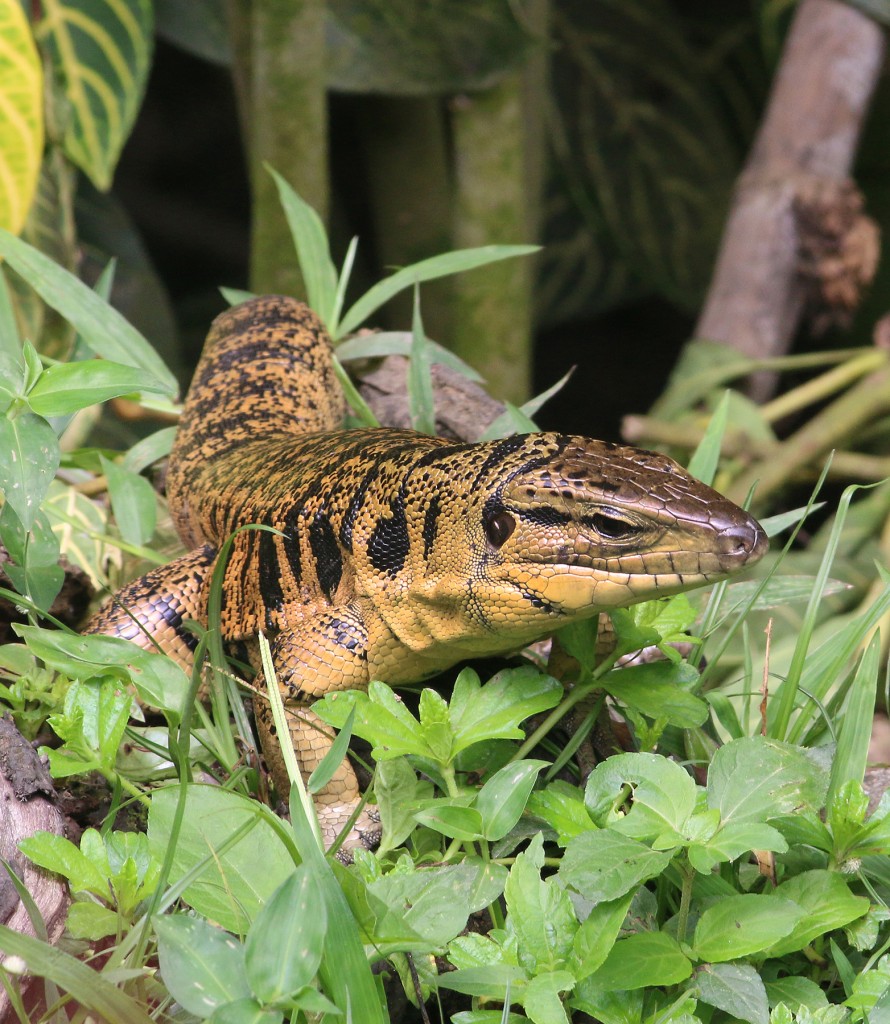THE ASA WRIGHT VERANDAH:
Most birders to Trinidad visit the Asa Wright Nature Center, situated ~1,000 ft above sea level. The Center is run by a non-profit organization with the goals of habitat preservation, education, and hosting visitors that view its birds, butterflies, plants, and animals. There are miles of trails to explore on the property, but one of the highlights of visiting Asa Wright is spending time on its verandah.

The famed Asa Wright verandah, viewed from within the garden. Flowers and feeders that attract hummingbirds, honeycreepers, and other birds surround the verandah, and its position on a hillside provides excellent views of the canopy of downhill trees.
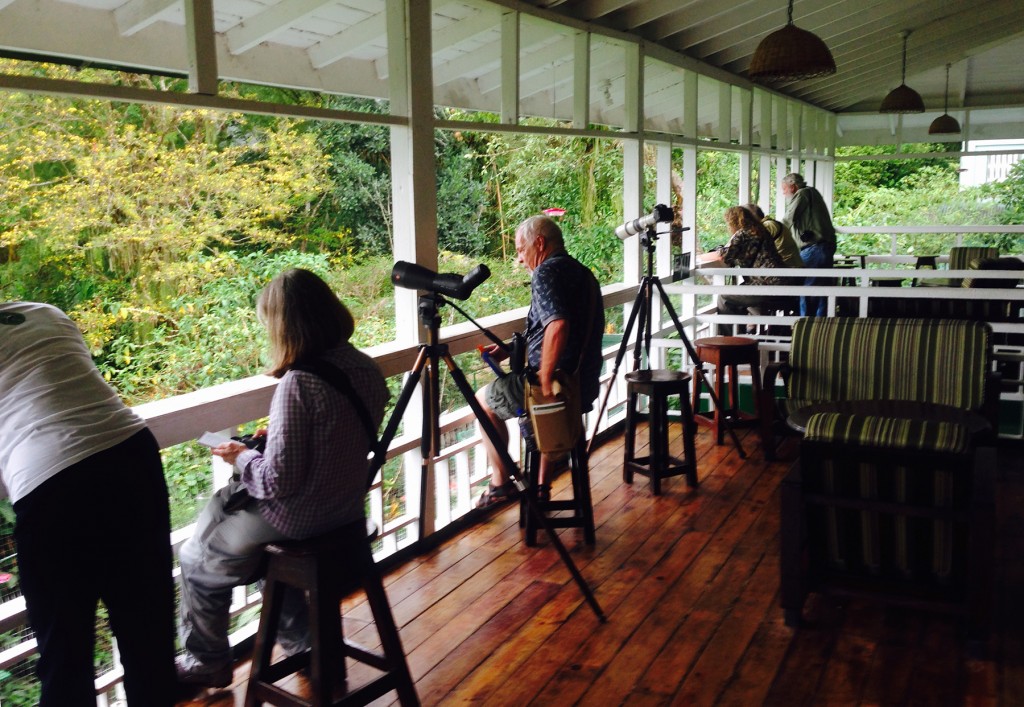
Birders on the verandah. This is birding in comfort, with excellent views, comfortable seats, an adjacent library and bar, naturalists to answer questions, a Leica scope for viewing distant birds, and shelter from the sun and occasional rain showers.
The verandah is situated on the back side of the main building, on a hillside that presents excellent views over the garden and canopy. In addition, more than a dozen hummingbird feeders are located at eye level or on the grounds below the verandah, and flowering plants such as vervain are located within the garden to attract hummingbirds. The result is that the verandah is a wonderful location for observing tanagers, honeycreepers, toucans, oropendolas, and ~13 species of hummingbirds in splendidly relaxing conditions. In addition, if a shower occurs, you can continue to view birds while remaining dry and comfortable (perhaps with a rum punch in your hand).
THE TRAILS: An excellent way to sample the birds of the forest is to walk the Asa Wright Discovery Trail, which is less than a mile long, and thus can be walked out and back at a leisurely pace in ~ 1 1/2 hours. Leks for both Golden-hooded and White-bearded Manakins are located along this trail, each of which had numerous individuals that were very active through most of the day.
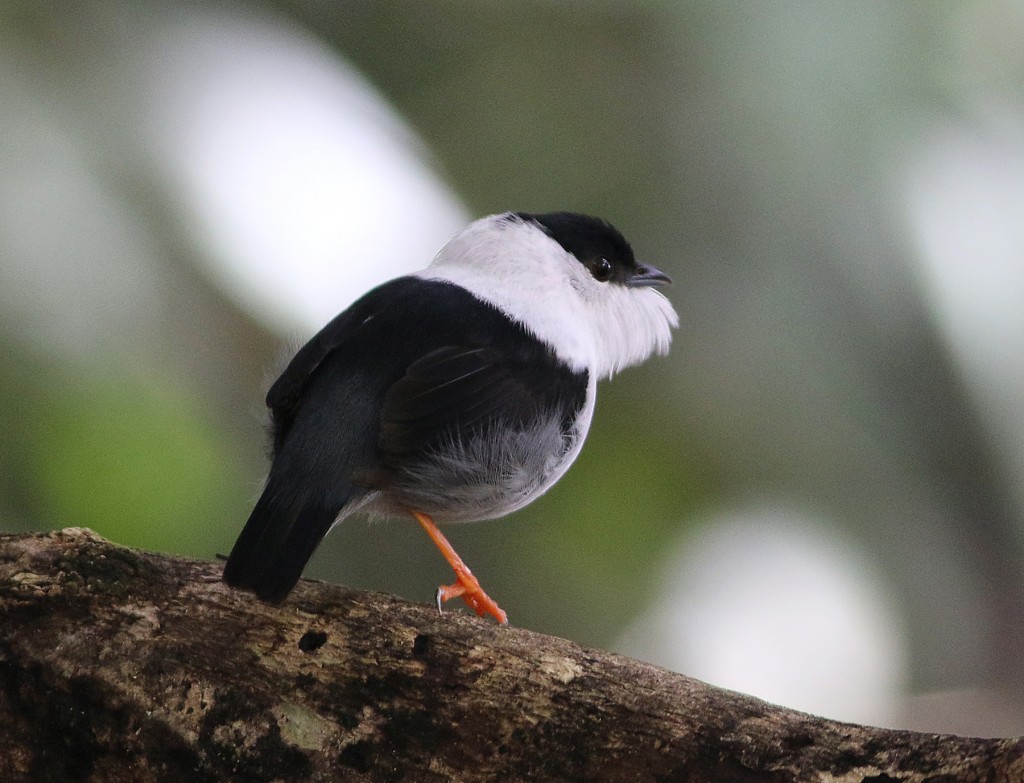
White-bearded Manakin in full display mode. Dozens of these birds could be seen at any time of day along the Discovery Trail.
When walking towards the manakin leks, you will be hearing loud ‘bonk’-ing coming from downhill; these are the calls of Bearded Bellbirds. Thankfully, the Bellbirds do not exclusively dwell on the top of canopy, but instead seem to prefer mid-height in the forest, allowing reasonable views. that is, IF you can find them. You would think that it should be easy; they are incredibly loud, call incessantly, are around the size of a crow, and are mostly white. Yet somehow they remain difficult to see. But when you see them, it is wonderful. Standing in the forest, listening to this strange noise echoing from all directions, and finally finding this remarkably attired bird (complete with ‘beard’) is something that we all should experience. This is now my favorite bird of all time. Watch the video by clicking here and decide for yourself.

Bearded Bellbird. Its surprising how hard it can be to find this amazing bird. But what a treat it is to see…and hear…it.
